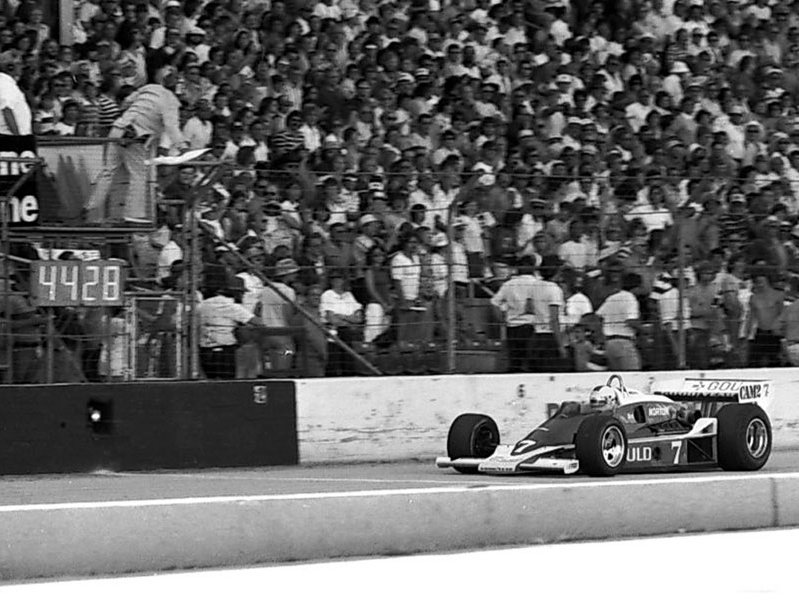Rick Mears wasn't smiling when he crossed the Milwaukee Mile finish line under the checkered flag in June 1978. Mears had just earned his first career Champ Car victory, but felt at the time that he hadn't won the race. After race-leader Al Unser Sr. ran out of gas with six laps to go, Mears -- himself low on fuel -- took the lead and held off a surging Johnny Rutherford at the finish line.
Thirty years later, Mears was back at the Mile -- where he recorded three of his 29 career victories -- to pose for photographs with his first Indy Car.
"Everybody asked me why I wasn't celebrating," Mears said Saturday at the Mile, where he posed for pictures with his original car. "It wasn't until A.J. Foyt told me that I would lose a lot more races like that than I would win in my career did I start to enjoy it."
His first victory was dramatic. After passing Unser, Mears noticed he was running low on fuel, as well. He passed by the white flag with his fuel light on and did everything he could to save what little gas he had left.
As Mears came out of turn four, Rutherford -- who had won both Milwaukee Indy Car races in 1977 -- was gaining ground quickly. Mears found a groove in the center of the track and coasted past the finish line, just two seconds ahead of Rutherford.
"When Rutherford came up on me I turned up the boost, then my engine started missing, and I just thought ‘oh shoot.' The car was dying and I thought I'd had it," Mears said.
"I shut the boost down to almost nothing just to keep the engine running. There was nothing else I could do. I forgot about the rear view mirrors, took the middle of the track and just stayed there."
Mears holds the record for most poles at Indy with six and shares the record with four victories at the Brickyard. Still, though, he counts Milwaukee as one of his favorite stops. The nature of the track, itself, is one of the main reasons.
"Being a mile track, there's traffic all the time," Mears said. "You're always passing somebody or getting passed. That's just part of the excitement."
The track's short length and wide surface -- with minimal banking in the turns -- allowed for wide-open racing. The surface, which in the past was a lot bumpier, also provided a challenge for drivers.
"You really had to work the bumps and your suspension," Mears said. "A lot of guys complained about the bumps, but I thought it was a tool. If I could handle a bump better than the next guy, I would be at an advantage."
By the time Mears arrived on the scene, Milwaukee and the Mile were already well-established as the traditional first stop following the Indy 500. Moving from the Brickyard's two-and-a-half mile track to the short setup of Milwaukee made, at times, for a difficult adjustment.
Mears says that the Mile's challenging nature provided an opportunity for drivers who fell short in Indianapolis to grab the spotlight.
"It was one of those catch-22s," he said. "If you won Indy, you didn't want to have to go straight to Milwaukee because you kind of wanted to enjoy the win for a little while. If you didn't win Indy, you wanted to come right to Milwaukee because you wanted to redeem yourself by getting back in the winner's circle and make up for whatever may have happened at Indy."
Mears was pleased to see Milwaukee retain its traditional date on the schedule when Champ Car and the Indy Racing League finally put an end to their decade-long feud earlier this spring.
The Indy Racing League made its first stop in at the Mile in 2004 and last year returned to the traditional post-Indy date.
"I love Milwaukee; this is a race town and it always has been," Mears said "I'm glad to see it back that way."



